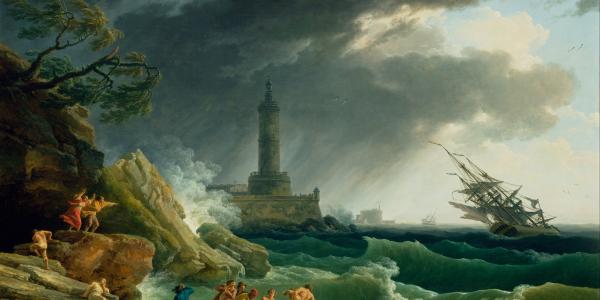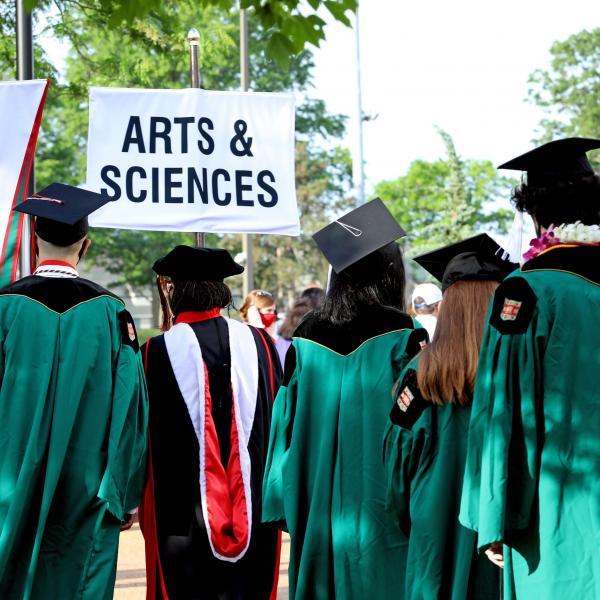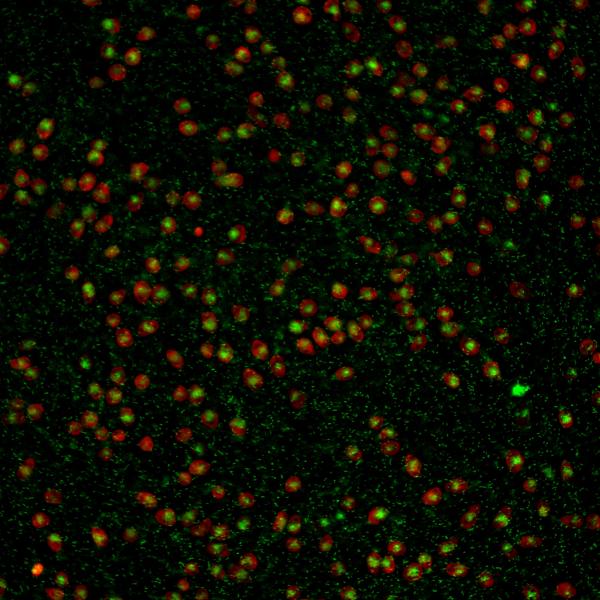In this Q&A, Tili Boon Cuillé describes the relationships she has discovered between Enlightenment philosophy and divination, and how renewed coherence between the arts and sciences can rescue both past and present from modern disenchantment.
Tili Boon Cuillé, associate professor of French and comparative literature, specializes in eighteenth-century French literature, philosophy, and aesthetics. Cuillé's 2021 book, Divining Nature: Aesthetics of Enchantment in Enlightenment France, juxtaposes major thinkers spanning the domains of natural history and the arts in order to demonstrate a widespread engagement with notions of divination and the spectacle of nature during the Enlightenment. Through an examination of the “marvelous,” Cuillé questions a prevailing narrative of disenchantment, which has persisted from the Enlightenment to the present day. Ultimately, Cuillé advocates healing the divisions between the arts and sciences by recognizing their shared foundation in experimentation and creative intuition.

How did you become interested in the “marvelous” as a research topic?
I was trained in literature and music, which for me came together quite naturally in opera studies. As I was completing my first project on the eighteenth-century French opera debates, I became very interested in the notion of the “marvelous,” which was used both to describe the intervention of the gods on stage and the machinery that was used to bring them on or off the stage.
One of the chief narratives that has gone largely unquestioned about the Enlightenment is that it is the origin of modern disenchantment. Since I had been dealing with a genre where the aesthetic of divine intervention — the marvelous — was at the heart of stagings at the time, this seemed rather counterintuitive to me. So I started looking for more instances of the marvelous in nature and art, which were ultimately enshrined in the national natural history museum, the opera, cathedrals, the imperial palace, and the first folklore institute.
What relationships between nature, art, and divinity did you discover?
The Enlightenment in general is associated with a turn towards nature as the source of inspiration for the reform of the arts. But what was interesting to me was the notion that this would be associated with a turn away from religion or the divine. Complicating that narrative, what I often saw in the aesthetics of the period were natural historians, philosophers, and artists grappling with emotional responses to the marvelous, or natural phenomena that lay beyond their understanding, that were situated mid-way between science and religion.
When I was working on Divining Nature, I kept encountering depictions in natural history, opera, paintings, and novels of responses to natural disasters. Nature in its calm and tranquil state can be associated with the idea of the beautiful, which is self-contained and cognitively possible. But once you get to vast seascapes or mountainscapes — anything that opens the horizon past the limits of human understanding or overwhelms us with the violence of natural phenomena — that breaks through into notions of the sublime.
The sublime transcends our ability to contain and comprehend what’s transpiring. In art, I saw over and over again how these overwhelming encounters with nature inspire emotions like wonder, enthusiasm, melancholy, and a sentiment of divinity.

How does the idea of the marvelous relate to scientists’ efforts to understand nature?
The Enlightenment is frequently associated with the inception of the empirical method, which is predicated on rational observation and experiment. But, in order to observe the world around you, you're reliant upon subjective sensory information. In order to link the facts or the results of experiments, reason is predicated on inferring the relationships between those isolated facts or experimental results. The intuitive leap — which is referred to as divination — is reliant on imagination, or a leap of faith. This is what rationalism is meant to preclude, but it's actually part of the reasoning process.
Based on your research, what do you think the sciences and humanities can learn from each other?
That the sciences are creative! Many people realize this — many artists are perfectly aware that their methods are experimental, and many scientists are perfectly aware that their methods are highly creative. But it's difficult to understand one another's language if the fields become too little conversant with one another; it's very hard to cross-pollinate.
In the university setting, it would be helpful if we didn't think of religion, science, and art as being mutually exclusive, if we didn’t think of the sciences and humanities as being related hierarchically, or fundamentally opposed, or somehow predicated on different processes of reasoning or creativity.
How do you think learning about the Enlightenment can help heal perceived divisions between disciplines?
Our thinking nowadays is highly compartmentalized, based in part on our thinking about the Enlightenment. We’ve retrospectively projected that compartmentalization upon the Enlightenment and then accused it of being the origin of today’s silo effect. And I'm trying to rescue the period from that, identifying it as a precursor to recent forays into environmental aesthetics.
Implicitly, if the Enlightenment is rescued from the notion of its being the origin of modern disenchantment, then the question of modern disenchantment itself could be called into question. Where did it start? What is it predicated upon? Is it necessary? And should we not start to cross some of these lines that we've drawn so irrevocably in the sand, and rethink some of the schisms that are informing public policy today? If we can interrogate the origin or reasons for the divisions we see, then we can make way for productive conversations and collaborations across disciplines.




